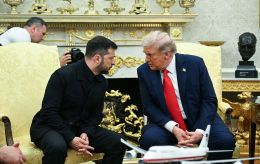Trump furious, Putin sends new signals: Latest developments on talks to end war in Ukraine
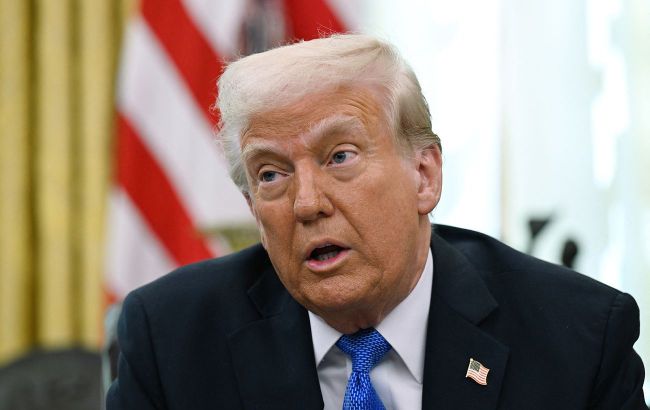 Photo: US President Donald Trump (Getty Images)
Photo: US President Donald Trump (Getty Images)
This week, various diplomatic activities around ending the war in Ukraine continued, although without significant breakthroughs. Donald Trump is increasingly dissatisfied that the peace he promised is still far off.
RBC-Ukraine reports on the main developments in the negotiation track over the past few days.
Contents
- Trump’s anger at Russia and Ukraine
- Any progress in negotiations?
- Dmitriev’s visit to the US
- Preparation of a minerals agreement
- Europe’s activity in supporting Ukraine
Trump’s anger at Russia and Ukraine
On March 30, NBC News reported that US President Donald Trump is “pissed off” and “very angry” with Russian president Vladimir Putin, particularly because of his statements about the alleged illegitimacy of Zelenskyy, as well as over the issue of a ceasefire in Ukraine. He said this to NBC anchor Kristen Welker during a phone interview that he is ready to impose tariffs on Russian oil.
On April 1, Fox News clarified that Trump feels frustrated by Putin’s actions. The American leader believes that Russia is dragging out the negotiation process for reaching a complete ceasefire. According to the channel’s sources, a “further action plan” is currently being discussed in the framework of the truce talks. In particular, new harsh sanctions are being considered.
Fox News interlocutors emphasized that the current level of sanctions enforcement is very low — roughly “3 out of 10.” One possible pressure tactic they named was halting the operation of Russia’s shadow fleet, which transports oil through the Baltic Sea.
Meanwhile, White House spokesperson Karoline Leavitt stated that Trump expressed dissatisfaction with the statements of leaders “on both sides of this conflict,” referring also to Ukrainian President Volodymyr Zelenskyy.
Any progress in negotiations?
US Secretary of State Marco Rubio said on March 28 that he could not say how much time would be needed to conclude a ceasefire, since “it doesn’t depend on the US.”
“There's a lot of work to be done with both sides, particularly with the Russian side, which we haven't talked to for years,” Rubio explained. But already on April 4, the Secretary of State clarified that the US would not wait long for real steps from Russia toward ending the war. “We will know soon enough, in a matter of weeks, not months, whether Russia is serious about peace, or not,” said Rubio.
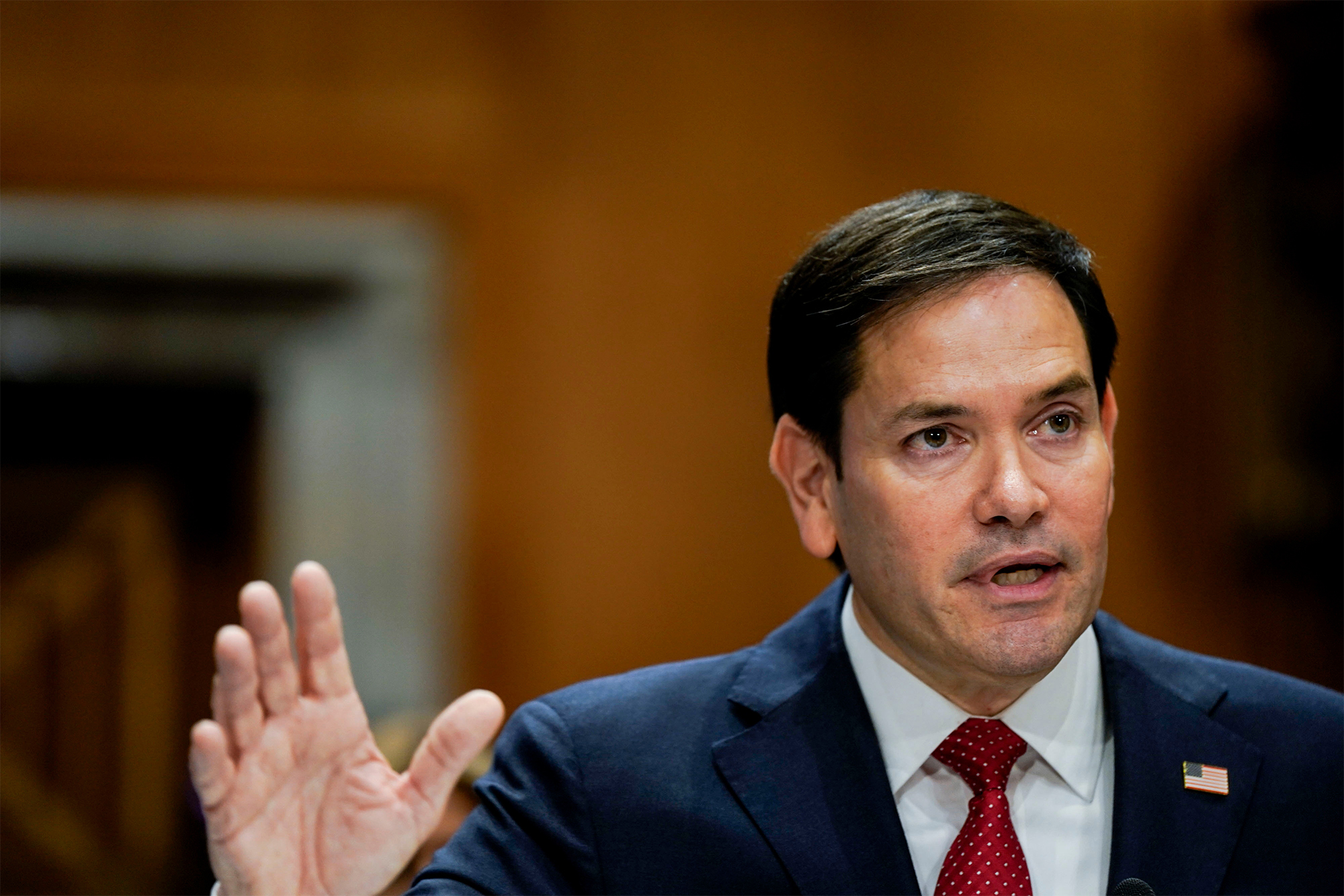
Marco Rubio (photo: Getty Images)
US President’s special envoy for Ukraine, Keith Kellogg, said on April 2 that Kyiv and Moscow are “close” to a full ceasefire. In his view, it is now necessary to form contractual terms, that is, documents outlining the positions of Ukraine and Russia, and then “bring them together.” At the same time, he once again repeated that both sides must make concessions.
“And I really believe that we are on the precipice of getting a ceasefire, but both sides will have to accommodation. Neither side is going to get everything they want,” said Kellogg in an interview with Fox Business.
On April 1, Russian deputy foreign minister Sergei Ryabkov stated that Russia considers Trump’s proposals for ending the war against Ukraine unacceptable, as they allegedly do not resolve the aggressor’s “problems.” According to him, the Americans are “only trying” to find a framework that would allow them to first achieve a ceasefire.
“Then (the US wants – ed.) to move to some other models and frameworks, which, as far as we can judge today, do not include our main demand – namely, resolving the problems related to the root causes of this conflict,” said the official from the aggressor country.
Meanwhile, Russia continues daily shelling of Ukrainian territory – energy facilities, as well as civilian infrastructure, along with strikes on residential buildings. Ukraine provides the US with full information on Russia’s violations of the partial ceasefire, said Volodymyr Zelenskyy on April 1. He noted that monitoring the implementation of ceasefire agreements in Ukraine is currently very important. And since there is no monitoring mission in the country, Kyiv itself provides evidence of Russia’s breaches of the quiet regime.
Meanwhile, Russia claims that Putin supported Trump’s proposal and, after their conversation on March 18, allegedly “gave a corresponding order to the military” to stop strikes on energy facilities for a period of 30 days. Moscow cynically accuses Kyiv of violating the agreements. On April 1, Russian foreign minister Lavrov complained about Ukraine to the United States, the UN, and the OSCE over the so-called “violation by Ukraine of the agreement on the inadmissibility of attacks on energy infrastructure.”
“Energy facilities have been under attack all this time, perhaps with a break of one or two days. We passed this list to the US President’s aide Mike Waltz. I sent it to US Secretary of State Marco Rubio, to our representatives in the UN and OSCE,” said Lavrov.
Against this backdrop, Ukraine’s military command is observing preparations by the Russian army to intensify fighting in several directions. According to deputy head of the President’s Office Pavlo Palisa, Russia is increasing pressure at the front amid consultations on a ceasefire.
Dmitriev’s visit to the US
On April 3, Putin’s negotiator, head of the Russian Direct Investment Fund (RDIF) Kirill Dmitriev, visited the US. It was the first visit to the US by a high-ranking Russian official since the full-scale invasion of Ukraine, for which the US had to lift sanctions from Dmitriev.
Following the meetings in Washington, Dmitriev stated that the Trump administration had achieved “tremendous progress in dialogue with Russia,” but a series of further meetings between the US and Russia would be needed to resolve all differences.
Dmitriev’s statement says that the US and Russia discussed cooperation in the Arctic and on rare earth metals, and that US companies were allegedly ready to occupy niches left by European companies that left Russia.
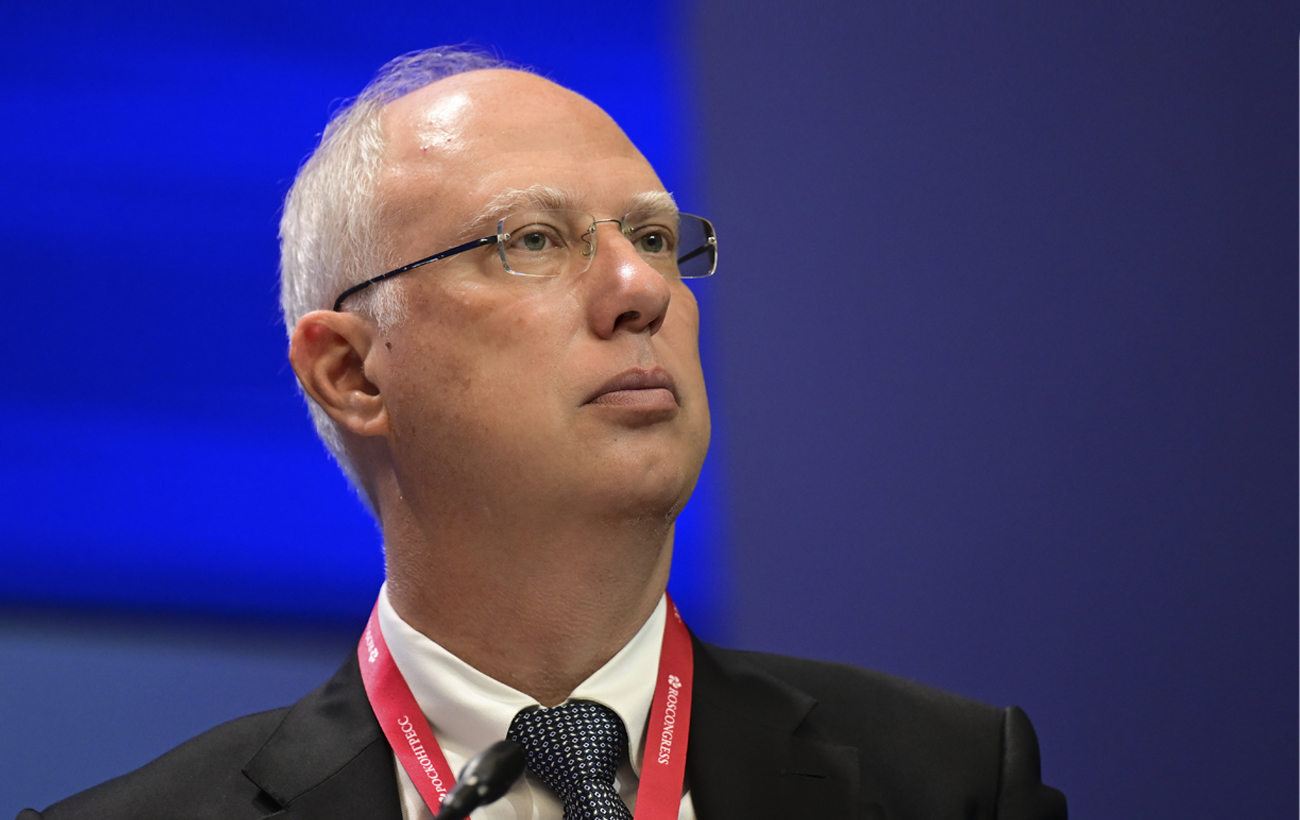
Kirill Dmitriev (photo: Getty Images)
Besides, Putin's representative mentioned security guarantees for Ukraine. According to him, despite the strikes on the Russian energy system, the Kremlin may consider the issue of security guarantees for Kyiv. At the same time, Russia is against Ukraine joining NATO. Such rhetoric from Putin’s representative somewhat differs from the traditional statements of the Russian authorities. After all, previously, Russia was against any security guarantees for Ukraine.
According to Bloomberg, the US is now awaiting Dmitriev's report to the Kremlin head before taking further steps to resolve the war in Ukraine.
Preparation of a minerals agreement
On March 31, Donald Trump said that Volodymyr Zelenskyy allegedly wants to abandon the mineral resources agreement. "He's trying to back out of the rare earth deal and if he does that he’s got some problems, big, big problems," Trump told reporters aboard Air Force One.
However, according to RBC-Ukraine sources, dialogue on the agreement continues. Ukraine and the US held a technical online meeting on the agreement.
"We have essentially started (discussions on the agreement - ed.), now we are working out our initial vision, and then we will continue talks with the Americans," an informed RBC-Ukraine source said.
Ukraine’s foreign minister Andrii Sybiha clarified on April 1: "On March 28, the Ministry of Foreign Affairs received the new text of the so-called mineral resources agreement from the American side through diplomatic channels. As is known, the Ukrainian side was ready to sign the previously developed framework agreement. Now we have received a proposal for development and, accordingly, a new text of the agreement," said Sybiha.
He stated that Ukraine has its own legislation regarding the processing of such documents. Accordingly, the internal state procedures have begun. The agreement with the US must not contradict Ukraine’s path to the European Union. This is one of the principled positions of the country.
US Treasury Secretary Scott Bessent announced on April 3 the upcoming visit of a Ukrainian negotiation team to the US. He added that the Ukrainian side has hired a lawyer and that the agreement "is ready on our side (the US side, - ed.)."
Europe’s activity in supporting Ukraine
European countries that are part of the Coalition of the Willing continue to develop options for deploying a contingent in Ukraine. For this purpose, a delegation of military personnel from the United Kingdom and France arrived in Kyiv on April 4. The goal of the visit is to study the technical aspects of the issue and to discuss further support for Ukraine. Meanwhile, it has become known that France’s President Emmanuel Macron may represent Europe in potential peace negotiations.
The topic of aid to Ukraine was also discussed during the Ukraine-NATO Council meeting in Brussels on April 3-4.
However, long-term support for Ukraine could be affected by the trade war launched by the US against most countries of the world. Trump signed the executive order on the mass implementation of trade tariffs on April 2. Chairman of the Verkhovna Rada Committee on Finance, Tax and Customs Policy Danylo Hetmantsev noted that this will significantly impact Ukraine’s economic and trade partners.
"They (Ukraine’s partners - ed.) will slow down. Accordingly, generate less money, which will reduce the possibilities of providing us with aid. At the same time, partner governments will be forced to activate protectionism, and not only against American goods. And these protectionist measures will hit us much harder," he added.
Meanwhile, the US is gradually withdrawing from aiding Ukraine. On April 11, a meeting of representatives from 50 countries is planned in Brussels to coordinate military support for Ukraine (the Ramstein format). The coalition will gather for the first time without the participation of US Defense Secretary Pete Hegseth. He attended the previous Ramstein meeting in February, although he was the first US defense secretary in the 26 coalition meetings not to lead it.
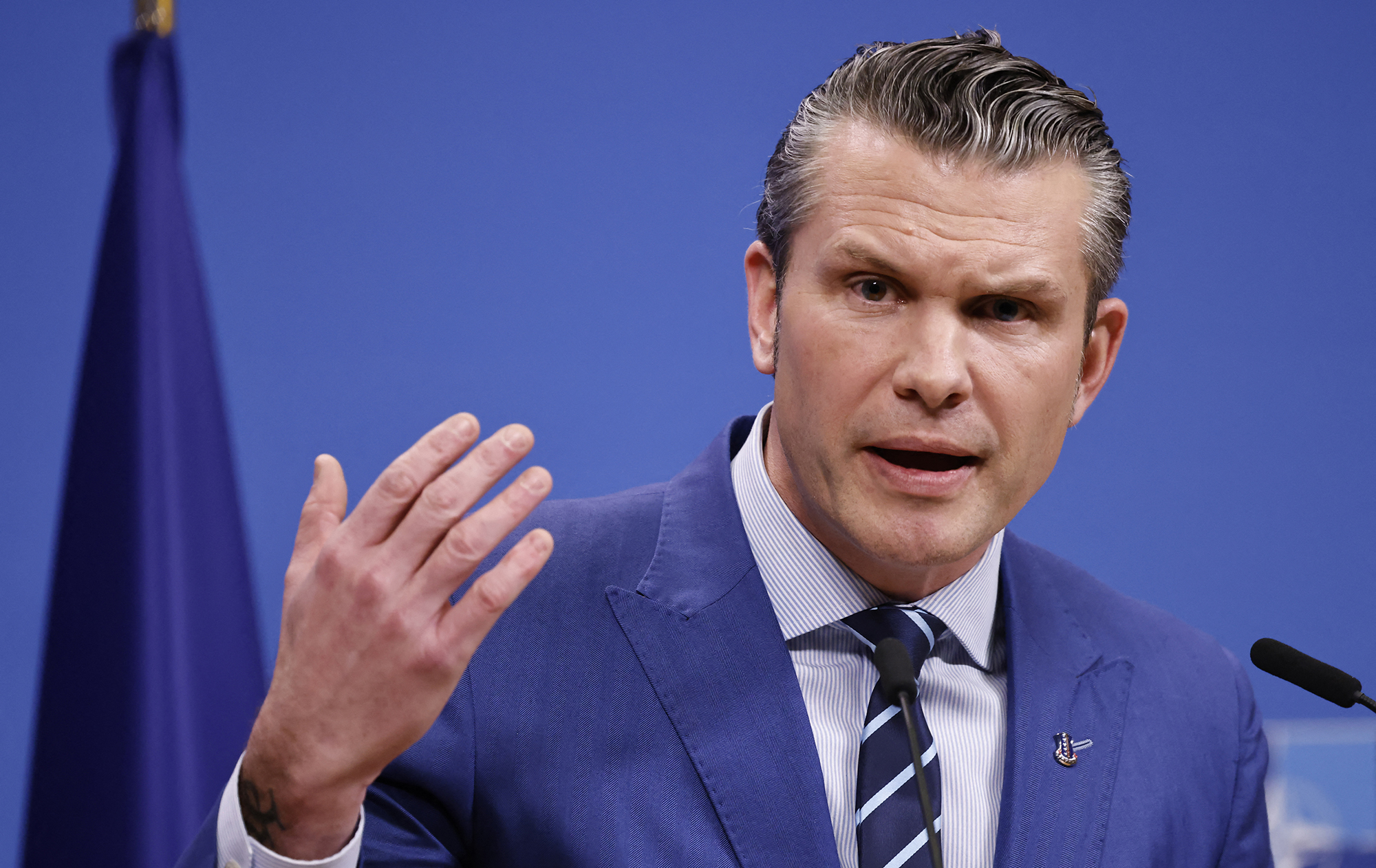
Pete Hegseth (photo: Getty Images)
Overall, Trump’s efforts to force Putin to move toward constructiveness in ending the war cannot yet be considered successful. Despite a number of diplomatic contacts between the US and Russia, the US president does not dare to seriously pressure the Kremlin.
At the same time, Ukraine continues to balance in its relations with the US. On the one hand, Kyiv and Washington have a common position regarding negotiations. On the other hand, the US is trying to impose a mineral resources agreement that is disadvantageous for Ukraine. And it remains unclear whether there is room for a compromise.
Against this background, Europe’s activity is important but secondary. Brussels and other capitals are still waiting to see what Trump’s diplomacy will lead to and will make further decisions on support for Ukraine based on that.
Talks on the deployment of a European military contingent in Ukraine will continue for another month, according to President Volodymyr Zelenskyy.
